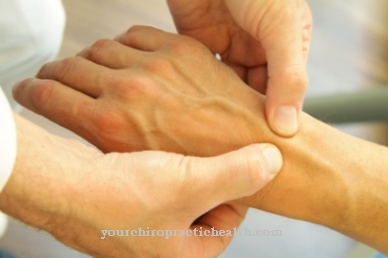Endurance sports are good for your health and your figure. The number of those who want to join the recreational joggers is increasing. To avoid damage to joints and intervertebral discs, suitable running shoes should use a Treadmill analysis be purchased. The assessment of the movement pattern is also useful when determining orthopedically necessary foot insoles in the case of foot misalignments.
What is treadmill analysis?

A treadmill analysis is the determination and evaluation of a movement pattern of the feet when running on a treadmill as well as the body posture shown. This is intended to identify any peculiarities and misalignments of the feet and other limbs as well as postural errors of the runner.
Many devices use pressure sensors to measure the forces that occur when the feet hit the treadmill. All posture and movement restrictions as well as malpositions can also be videographed while running and evaluated using a special computer program. The various video sequences can be measured using a computer. Based on the measurement results, the angles of movement of the individual joints are revealingly clear. In this way, existing misalignments of the joints can be determined.
Repeating the running test in slow motion can also provide the person concerned with insightful insights through precise observation of their own running behavior. A treadmill analysis is particularly useful when choosing your first running shoes. However, due to possible changes, repetitions of the treadmill analysis are advisable. By detecting restricted or inhibited movements, it is possible to advantageously change the running style.
Function, effect & goals
Treadmill analysis is often done to optimize running style and when buying new shoes. Without additional measures, however, the treadmill analysis is no substitute for necessary sports medical examinations.
A detailed movement analysis should be carried out by a sports doctor if the cause of painful discomfort while running is to be found out. Depending on the symptoms, an examination of the feet, legs, hips or the spine may be necessary to identify the problem. The majority of the causes of running problems are incorrect positioning of the feet. The aim of the treadmill analysis is also to prevent impending symptoms. If the bones and ligaments are excessively stressed, the running shoe must have excellent cushioning properties.
The predominant nature of the ground on the runner's running route, body weight and training frequency are important. Shoes with special fits or reinforcements, shoe insoles or physiotherapy advice can also help to improve symptoms in runners. Recommendations from sports doctors or orthopedists are more detailed and well-founded than the advice from specialist salespeople in sports shops. Through the expert evaluation of treadmill analyzes and movement sequences, differences in leg lengths or a wrong focus in posture can be identified in addition to foot misalignments.
Before a treadmill or movement analysis by the sports doctor, a personal conversation takes place between the doctor and the runner to present complaints and change intentions. This is followed by a thorough orthopedic examination. The mobility of the joints is checked. Marking points are placed on the spine, hips, legs and buttocks for treadmill analysis. This is to prepare the muscle displacements for evaluation by video analysis. For the treadmill test, the shoes that the runner is currently using in training are used.
The specific wear and tear on the outsole could provide initial clues as to the cause of the problem. The first use of the treadmill is done barefoot or in socks in order to identify problems that are not caused by the shoes. It is determined how the touchdown and rolling behavior appear and whether, for example, the runner touches down with his heel first. After the run with the runner's shoes, a third test can also be carried out with other sports shoes for the purpose of comparative evaluations.
Depending on the findings on the basis of the treadmill analysis, a final consultation will take place with the person concerned about measures and changes to be taken. These can include orthopedic shoe insoles, foam supports, running shoes with special properties or changes in running style and technique.
Risks, side effects & dangers
Treadmill analyzes can be carried out in sports shops, medical supply stores, physiotherapy practices and fitness studios. One problem is the motion analysis that is often required as a supplement. Often there is a lack of the necessary technology and trained personnel.
It also makes a big difference whether only the purchase of sports shoes is to be prepared from the runner's point of view or whether complaints are to be determined. If you jog permanently and therefore want to buy a pair of running shoes for the first time, you should not neglect to check your health requirements. In any case, device quality should not be the only consideration when evaluating the quality of a career analysis. There are other factors to consider such as:
- Consultation to determine background information about the runner
- Training and specialist knowledge of the service provider carrying out the work
- Experience with the device operation
- Motivation of the analyst, he should be a runner himself
- Duration and scope of the analysis
When assessing a movement sequence, work must be carried out with optimum accuracy. Small deviations can impair the effectiveness of change measures. Often simple mistakes are made. This includes, among other things, that the person concerned does not stand on the device in sportswear. In some cases, the test also begins immediately after stepping on the treadmill without the person concerned having run in.
It is also insufficient if the test takes place without a previous interview. In order to find a suitable place to carry out a treadmill analysis, it is advisable to interview experienced runners.












.jpg)



.jpg)










.jpg)
